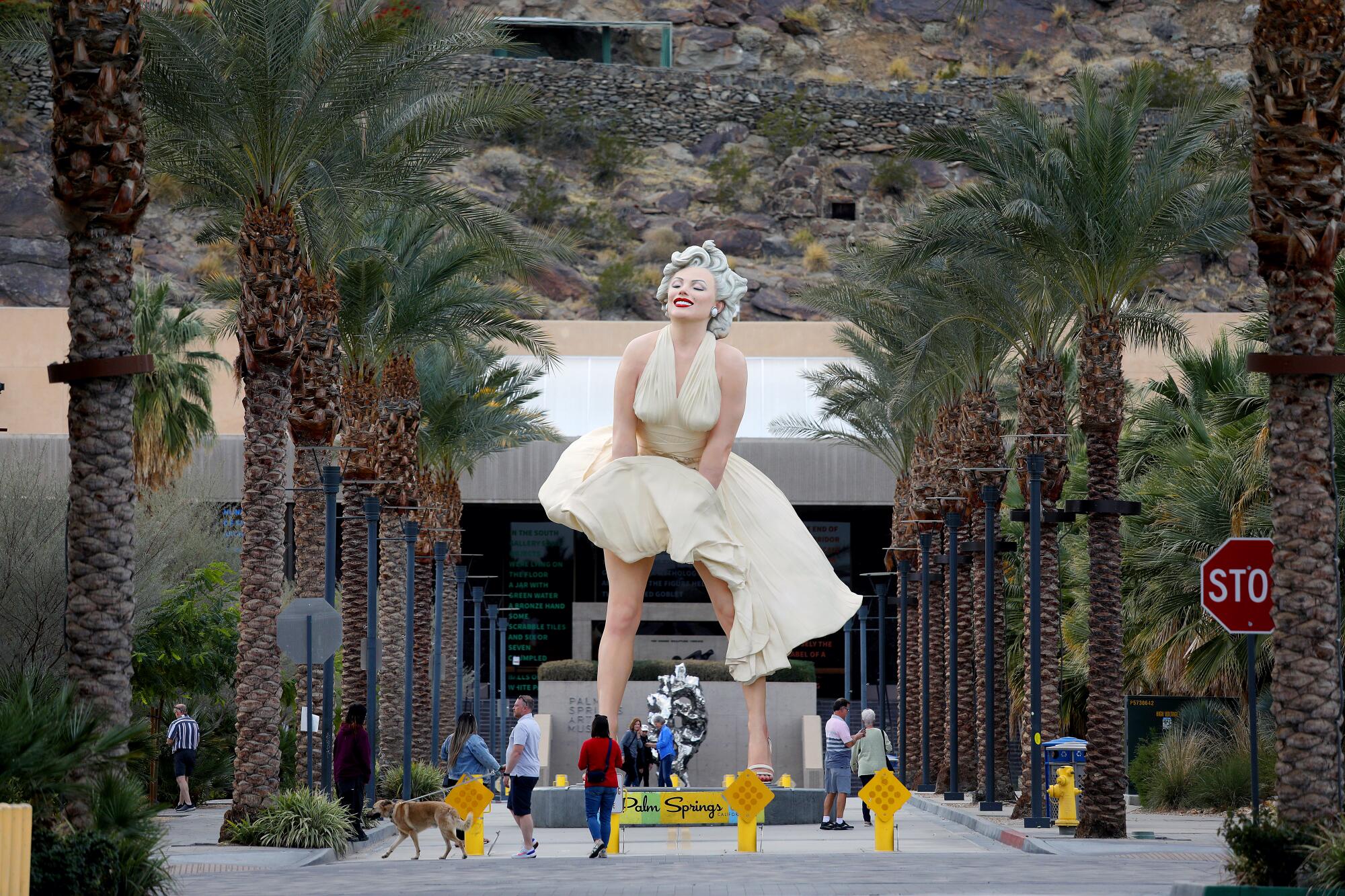
- Share via
Two years ago, YouTube star Luan Palomera paid $1.5 million for a chic vacation home in Palm Springs.
Today, he’d be lucky to get $1 million for it.
As L.A. continues its crackdown on Airbnb, city officials can turn toward the desert for an example — perhaps a cautionary tale — of the potential side effects of curbing the short-term rental market.
In Palm Springs, a cap on short-term rentals in specific high-demand neighborhoods has all but frozen the market in those communities.
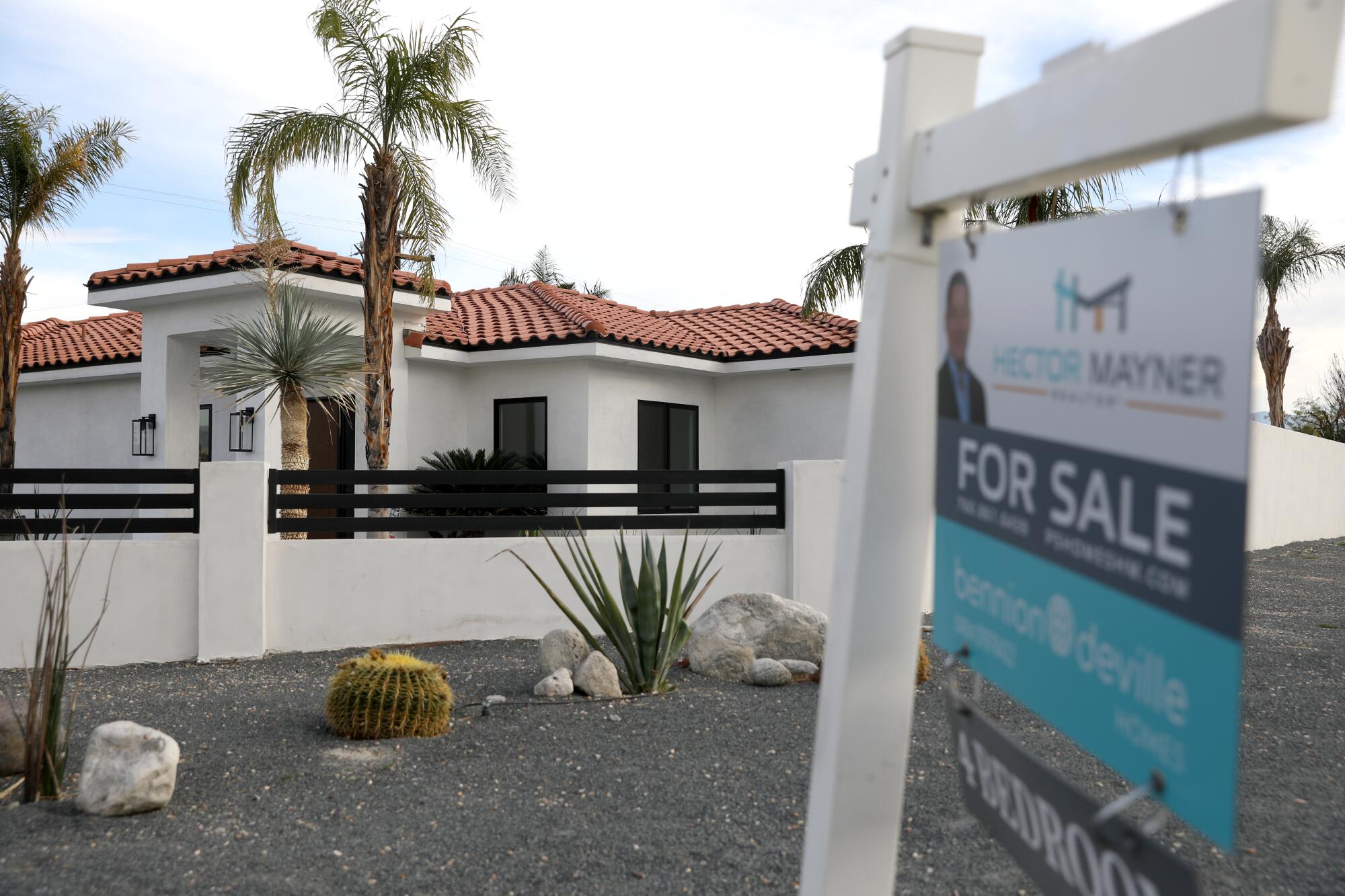
Sales are down. Homes languish on the market for months. And investors who bought up Palm Springs properties during the COVID-19 pandemic are facing hundreds of thousands of dollars in losses.
Airbnb has changed the face of the rental market since it launched in 2008, making it much easier for homeowners to rent out spare rooms or entire houses. But in the years since, cities have started to notice the downside of so much housing stock turning into short-term rentals.
Activists argue Airbnbs remove affordable housing from the market. Residents complain that the influx of tourists leads to loud, late-night parties and generally takes away from a place’s neighborly ambience. Disputes between hosts and renters lead to movie-level drama and months-long courtroom clashes.
Explore the latest prices for homes and rentals in and around Los Angeles.
As a result, some cities are limiting short-term rentals, and each one seemingly has a different strategy. New York City allows rentals only if the host remains present in the unit for the entire stay. L.A. adopted the Home Sharing Ordinance, a regulatory framework that requires a license that allows hosts to use only their primary residence — where they live at least six months of the year — to rent out for a maximum of 120 days per calendar year.
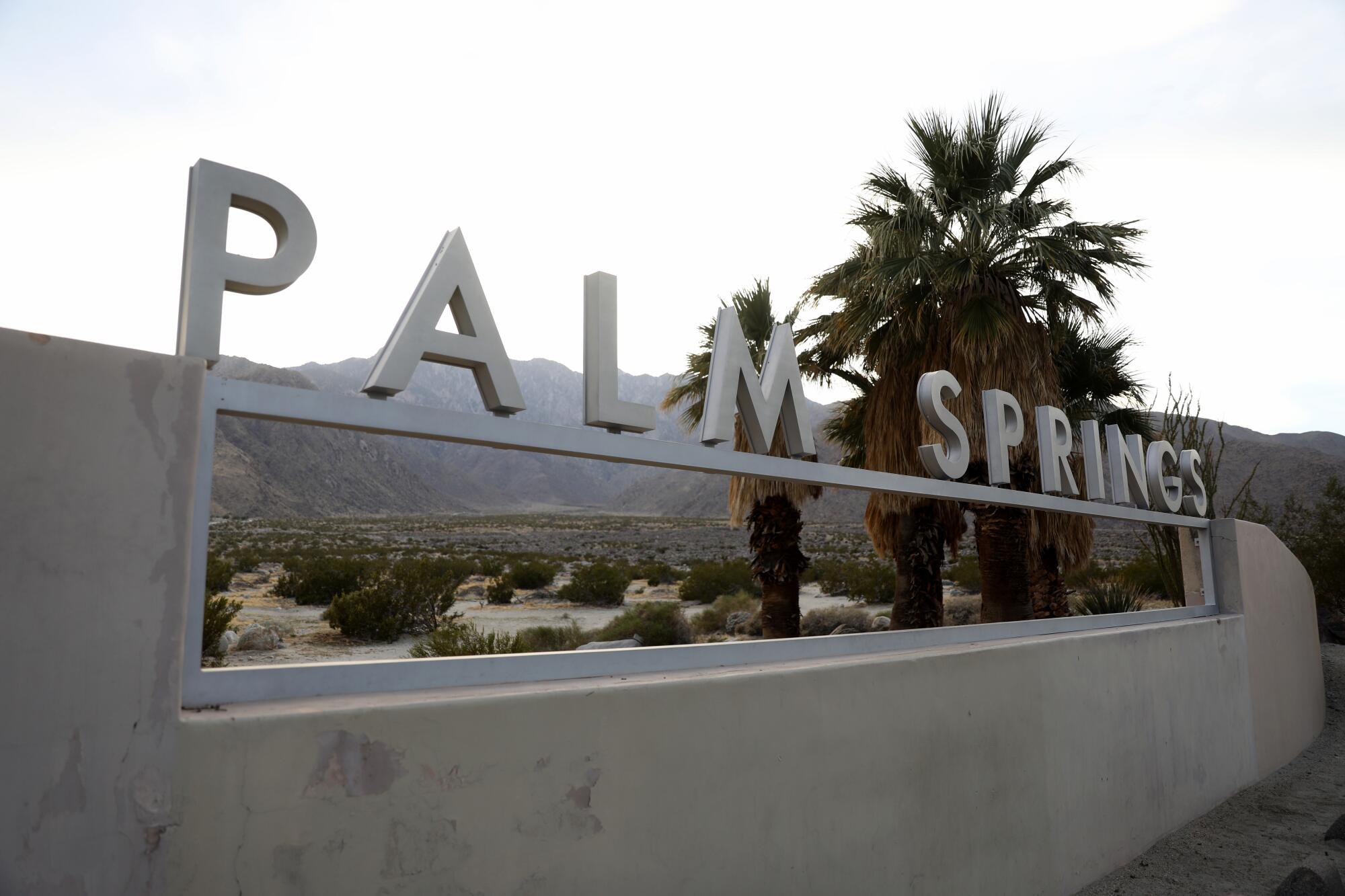
Palm Springs, a city dependent on tourism, tried something new in an attempt to preserve its local identity in the era of Airbnb.
In 2022, the City Council adopted an ordinance that capped the number of rental certificates in any given neighborhood to 20% of the homes there.
If you live in one of 10 Palm Springs neighborhoods that already are over the limit, you’re trapped in permit purgatory, stuck on a waiting list for a rental license that may take years.

Subscribers get exclusive access to this story
We’re offering L.A. Times subscribers special access to our best journalism. Thank you for your support.
Explore more Subscriber Exclusive content.
Those with licenses before the cap were grandfathered in. Those count toward the cap, so most of the capped neighborhoods were over the limit as soon as the ordinance passed. Some, like Movie Colony East at 21.8%, are just above the limit. Others, like Racquet Club Estates at 41.6%, have blown through it.
But beyond the grandfathered homes, the rules are extremely strict. If you have a license and sell your home, the license isn’t passed down to the buyer.
Real estate agent Tim Sarlund had a homeowner client who died with a rental license. When the client’s brother took over the property and applied for the license to be renewed, he was denied because there was technically a change in ownership, according to Sarlund.

Of the 66 organized neighborhoods in Palm Springs, the 10 over the limit are spread throughout the city: Desert Park Estates, El Mirador, El Rancho Vista Estates, Gene Autry, Lawrence Crossley, Movie Colony East, Racquet Club Estates, Ranch Club Estates, Sunmor and Vista Las Palmas.
At a time when many Palm Springs home buyers have purchased properties specifically to list them on Airbnb, having one that you can’t rent out quickly loses its luster. And the new ordinance is killing home values in those 10 neighborhoods, real estate agents say.
A “Stunning Mid-Century Palm Springs Oasis,” as an Airbnb listing brags, could — if sold — become an overpriced, mostly unoccupied box getting blasted by the brutal desert sun for most of the year. Listings in these neighborhoods carry a proverbial scarlet letter as Palm Springs becomes a city of rentable homes versus non-rentable homes.
Michael Slate, a local real estate agent, said most agents don’t even bother hosting open houses for listings in capped neighborhoods.
“No one shows up,” he said. “Buyers are aware of the cap, and properties on the market in those neighborhoods don’t get a lot of activity.”
Slate has one client who paid $1.1 million for a home and spent $300,000 on renovations. Then the cap kicked in. Now, she’s not sure she’d be able to sell it for $1 million.
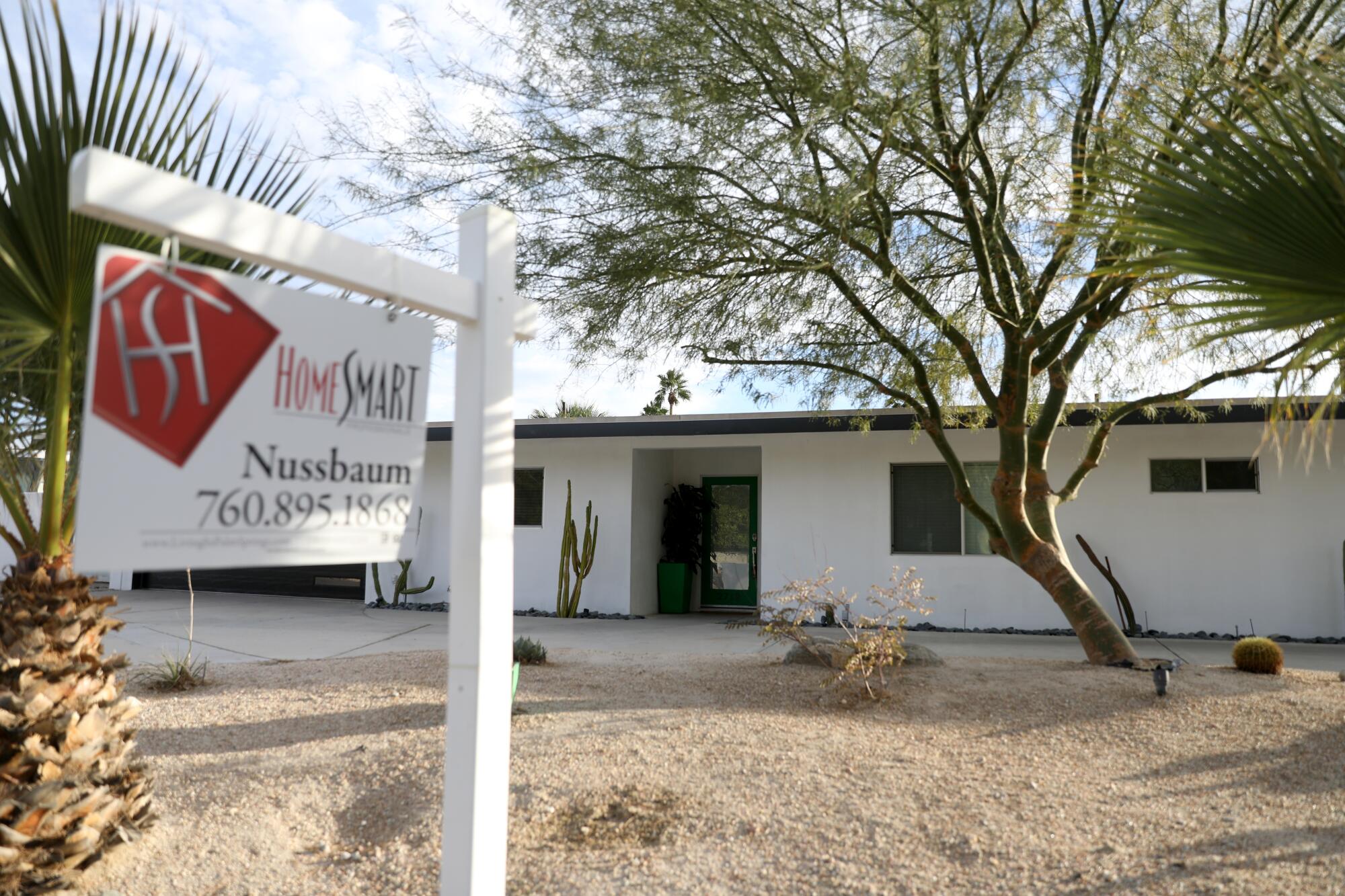
The good news is that there are plenty of great deals to be found for those in the market, as long as you’re only looking to live there yourself. In the Gene Autry neighborhood, one listing warns potential buyers: “Property can not be short term rented as there is a STR permit cap in the neighborhood.”
Michael Copeland said the cap came as a surprise to many, including some investors who bought homes in 2022 hoping to rent them but didn’t secure a permit before the ordinance passed.
Copeland, a resident and real estate agent, is facing a similar predicament. He bought a home in the Gene Autry neighborhood for $1.8 million in March 2022 and quickly obtained a rental license. The ban kicked in eight months later.
But now he wants to sell the home, and Gene Autry has the longest waiting list of any neighborhood in the city, with 32 applications in limbo. Copeland listed the home for $1.725 million, but with no takers he slashed the price to $1.595 million. It still hasn’t found a buyer after more than a year on the market.

“One of the things Palm Springs did wrong with this ordinance is not letting licenses transfer when you sell a home,” Copeland said.
In the second half of 2022, Desert Park Estates saw 42 sales with a median price of $908,500, and the average home sold after 38 days on the market. During the same stretch the following year after the cap was introduced, there were only 22 sales with a median price of $832,500, and the average home took 74 days to sell. Half the sales, double the time.
To be clear, caps aren’t the only thing driving down prices. The market in Palm Springs — and all of Southern California — is still nursing a hangover from the wild pandemic market. Low interest rates led to record prices in the last few years, but as interest rates climbed higher and higher, home values dipped across the board.
In addition, people simply aren’t renting as many Airbnbs in Palm Springs these days.
“Occupancy rates are dismal,” said Sarlund, who runs a small short-term rental business in addition to working as a real estate agent. “Even people with rental licenses aren’t getting as many contracts as they used to.”
But to many in the 10 affected neighborhoods — and neighborhoods inching closer to the 20% mark, such as Twin Palms and Little Beverly Hills — the cap is a major factor in declining home values.
Dealing with the influx of rentals has been a priority for the city and its residents for years. Of the 35,127 residential units in Palm Springs, 2,813 are registered as vacation rentals — roughly 8%, according to city data.
The city has been more lax than others in the desert on short-term rentals. A handful of Coachella Valley cities such La Quinta, Cathedral City and Indian Wells have more or less banned new short-term rental permits entirely, with a few exceptions.
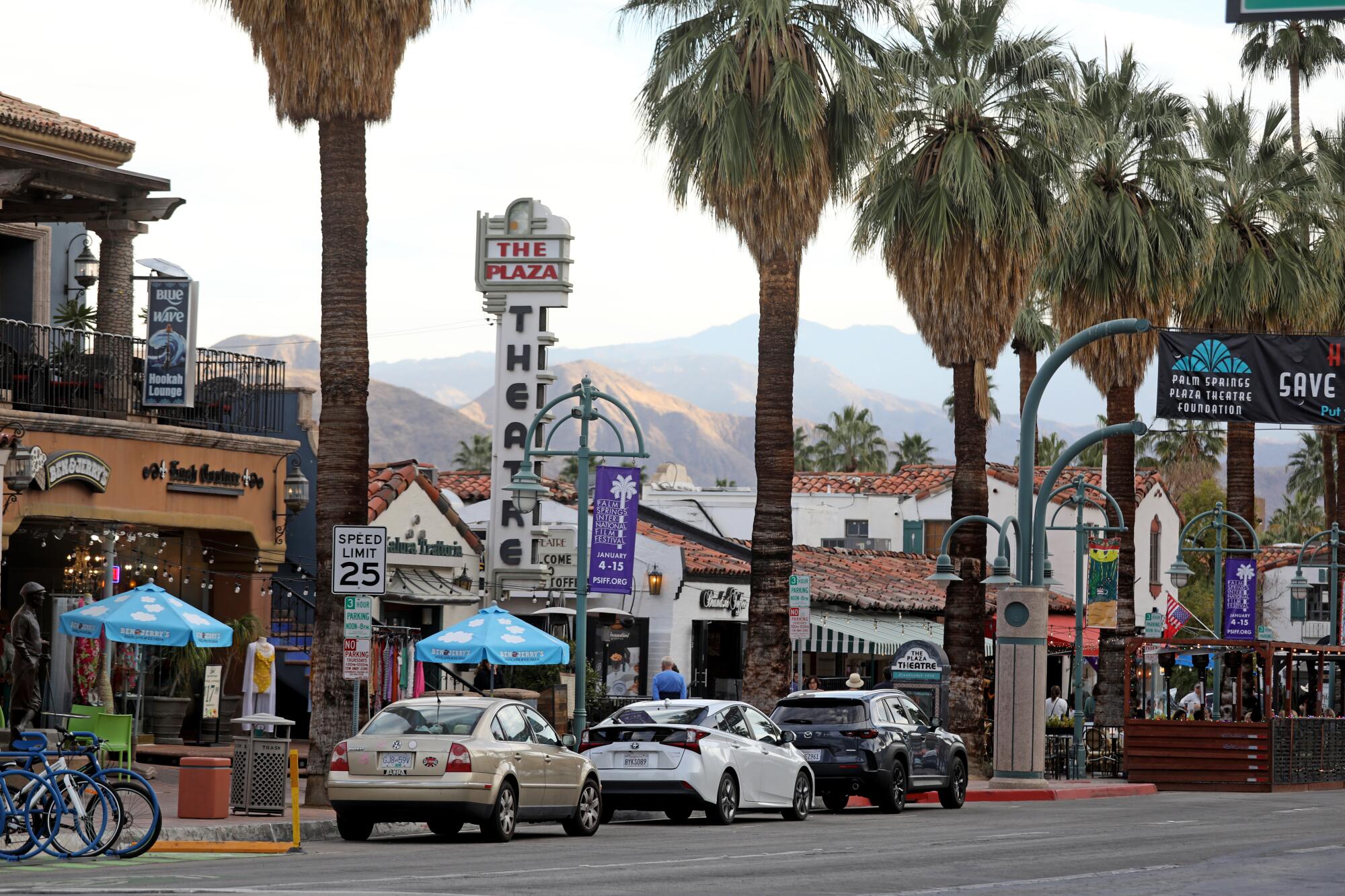
In 2018, Palm Springs residents decisively rejected a short-term rental ban, shooting it down with 68% of the vote. Since then, two sides have formed: investors and part-time owners who support rentals and believe tourism is vital to the economy, and locals and long-term homeowners who wish to curb rentals to preserve the local charm.
“I want to know my neighbors. I want stability, not a new group of people coming into the house next door every weekend,” said Palm Springs resident Mary Simon. She owns a home in a capped neighborhood but doesn’t mind because she has no plans to sell.
There have been small movements to try to persuade the City Council to overturn the cap, but most locals have accepted the new way of life either happily or begrudgingly, Copeland said.
As a compromise, the city has introduced a junior vacation rental certificate that anyone can apply for whether they live in a capped neighborhood or not. It costs $642 and allows homeowners to rent out a property six times per year.
So homeowners could technically rent their homes six times for up to 28 days each time — the maximum that Palm Springs considers a short-term stay — but good luck. With occupancy rates down overall, it’s tough to get a renter to book for more than a weekend, much less a month.
In the meantime, homeowners in capped communities are watching their home values fall.
Sarlund said some investors who bought homes during the pandemic are facing foreclosure.
“Homes that used to pull $1.2 million are struggling to get $800,000,” Sarlund said. “My neighborhood has dropped 30% to 40% in value.”

He’s currently representing a seller who paid $1.16 million for a house in the Gene Autry neighborhood with plans to put it on Airbnb, but they weren’t able to secure a permit before the ordinance kicked in.
The house hit the market less than a year later asking $1.4 million. Five price cuts and 10 months later, it’s still waiting for a buyer at $875,000. More price cuts are probably on the way.
“They’re set up to lose a lot of money,” Sarlund said.
More to Read
Sign up for This Evening's Big Stories
Catch up on the day with the 7 biggest L.A. Times stories in your inbox every weekday evening.
You may occasionally receive promotional content from the Los Angeles Times.
















